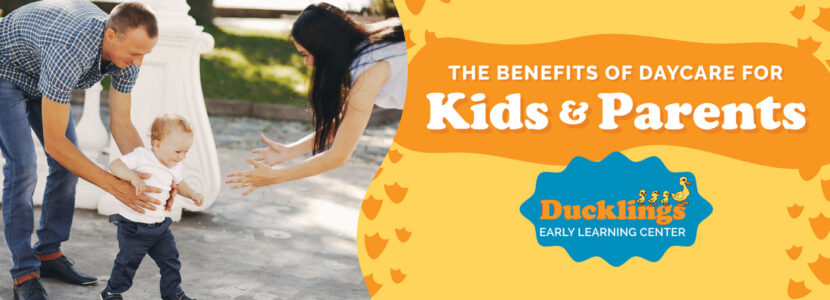The decision to send your child to a daycare center is often fraught with worry and doubt. And while it may be an exciting milestone, it can also bring feelings of guilt which is quite normal. As you near the big day you may wonder if the benefits outweigh the stress, and the answer is yes.
There are many benefits of daycare and not just for your little one, but for you too! The advantages have been researched extensively and found to have positive implications that extend far beyond a child’s day-to-day happiness. Let’s also not forget that daycare provides parents the time and space needed to support and sustain their families.
Still have questions? Here are some of the many benefits of daycare for kids and parents.
What age benefits from daycare?
Childcare centers are well-versed in taking care of children ranging from babies to kindergarteners. Each age range has their own social skills and cognitive growth development.
- Babies benefit as they are setting the foundation for their sense of security and safety. By having a caregiver available all day, they will feel taken care of and tended to. There are also different voices to listen to and new colors to see.
- Toddlers benefit from seeking new experiences as their social skills have skyrocketed. WIth their love of play, your daycare center should provide ample opportunities to sing, play outside, and incorporate imaginative play. At Ducklings Early Learning Center our curriculum focuses on play-based learning so children can learn in a fun and engaging environment.
- Kids will be developing their critical social skills and at this age many daycare centers will introduce school-readiness programs. The love of learning is still encouraged through play, but here it gradually moves towards a school-like curriculum.
What do children DO at daycare?
Daycares will provide a safe and nurturing environment supporting each childhood development milestone. A few things offered could include:
- Baby signs
- Storytime
- Sing alongs
- Arts and crafts
- Imaginative play
- Outdoor play
- Music and movement
At Ducklings, we make a point to get as much outdoor time as possible as the weather permits. Interacting with nature is a great way for kids to explore while getting the wiggles out.
Does a routine help?
Children thrive on routine because it makes them feel safe. They know what to expect and look forward to, so by going to daycare everyday they develop structure. They will quickly know when storytime is everyday, that recess comes after eating lunch, arts and crafts are after recess, and the clean up song means it’s almost time to go home.
Routine also helps parents because you can be certain that your daycare center will be available to watch your child while you go to work, or even if you want to take a day off for yourself. Your little one will be in the best hands and you can feel confident that they are having a great day.
Independence for everyone
A quality daycare program will provide endless opportunities for children to strengthen their skills by becoming more independent each day. Fostering independence at a young age is essential in setting them up to lead a life as a confident and capable adult.
For parents, one of the many advantages of daycare is the independence it offers you as well. As well as providing time to devote to work and other family duties, your time for independence as a parent is still important for your emotional well-being.
At Ducklings Early Learning Center we know dropping your child off for the first time can be emotional (for you both!) which is why we pride ourselves on nurturing the whole child. We support developmental milestones, make our little ducklings feel secure with routine, and we foster their independence so they can be strong and confident adults.
There are numerous benefits to the entire family when selecting a daycare center, and our staff is always happy to give a tour or answer any questions. Are you looking for a daycare center to help your kids grow & thrive? Contact Ducklings Early Learning Centers today!

